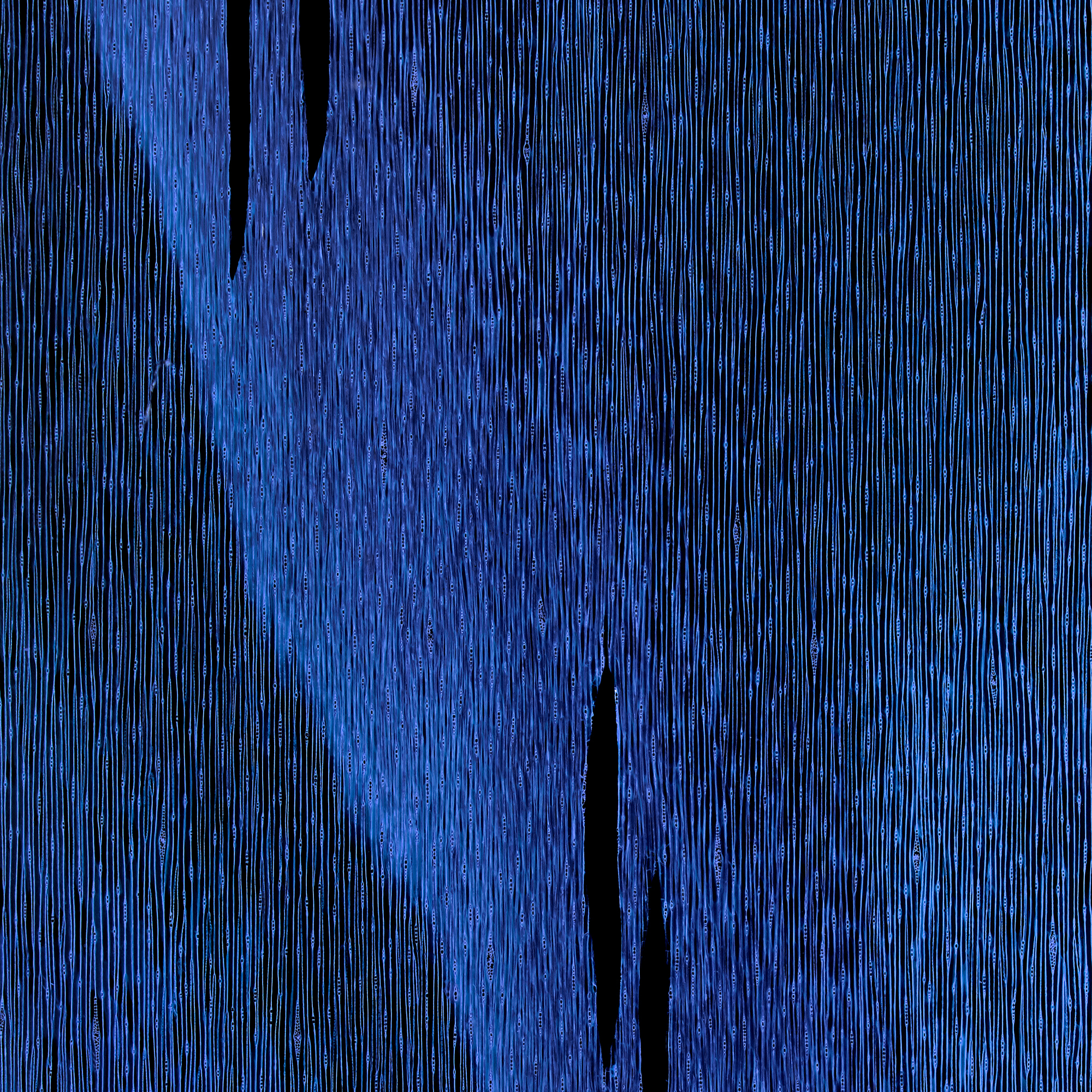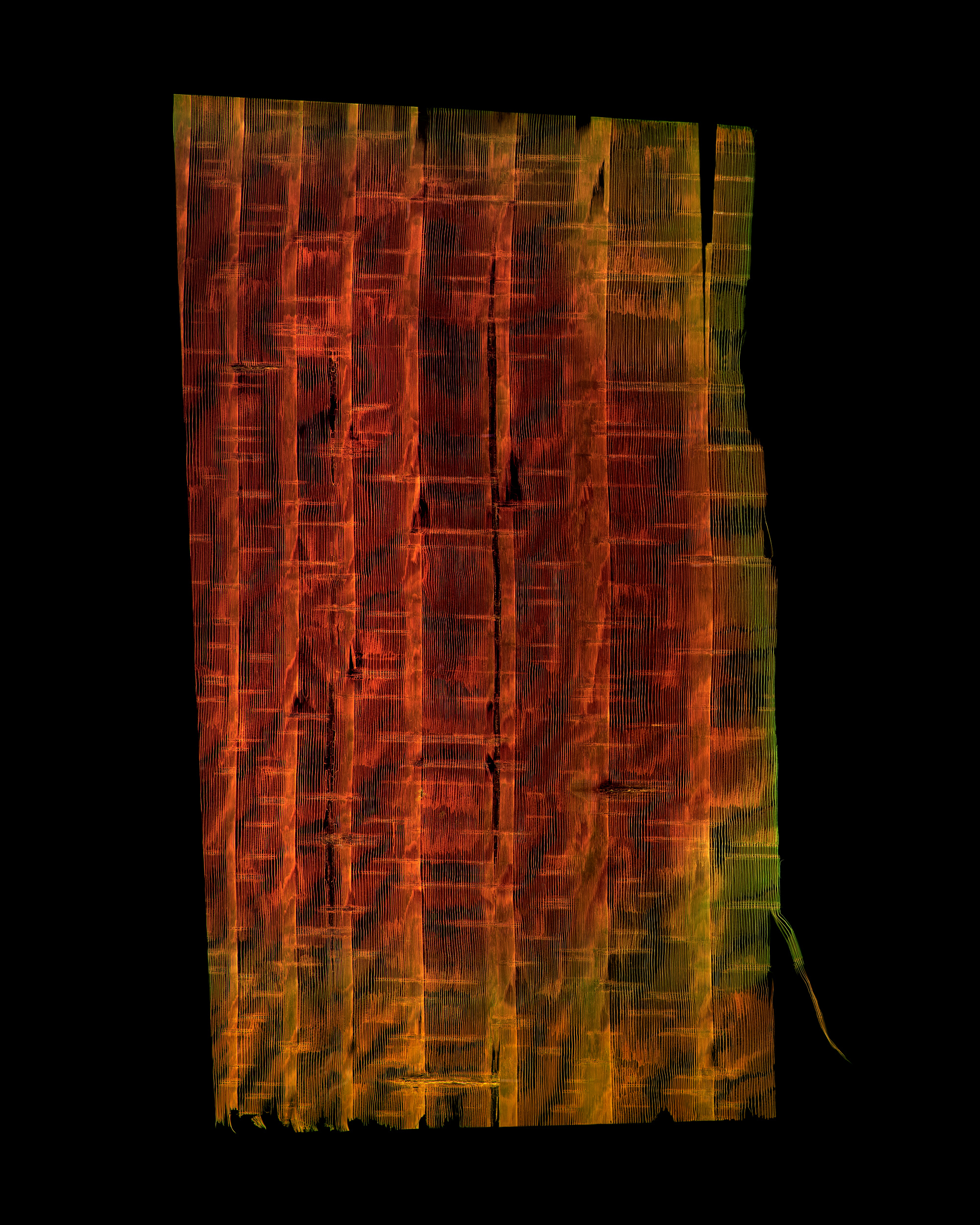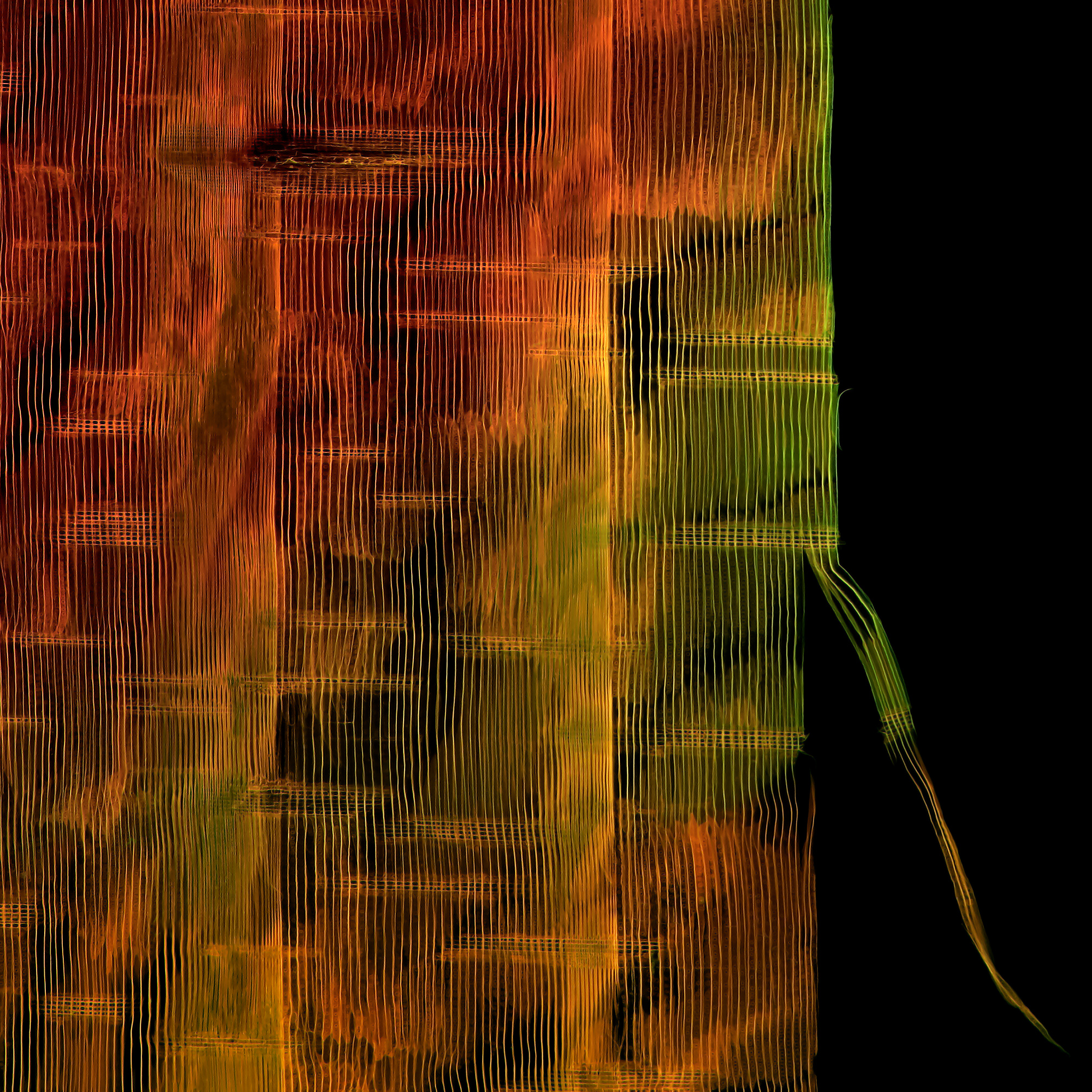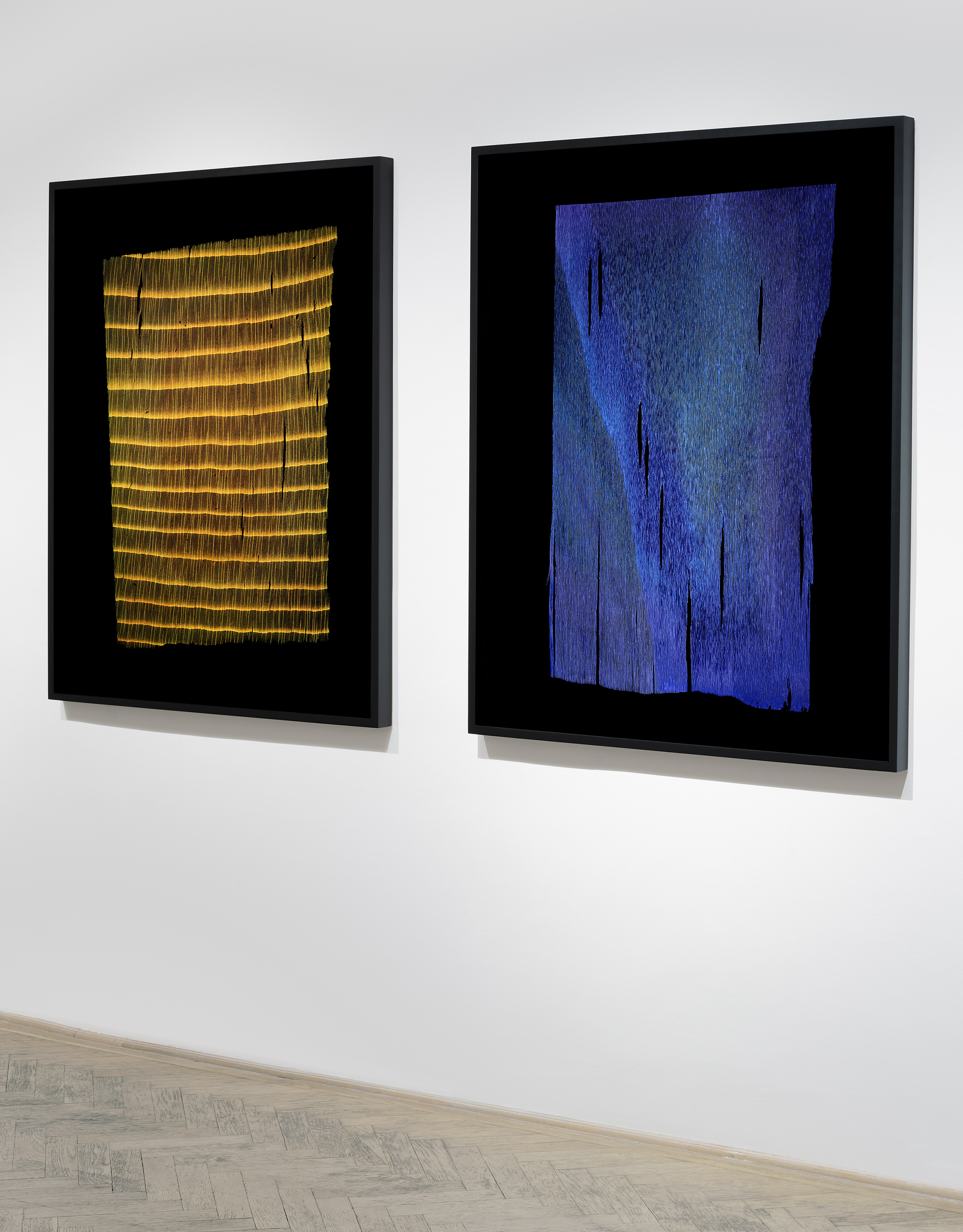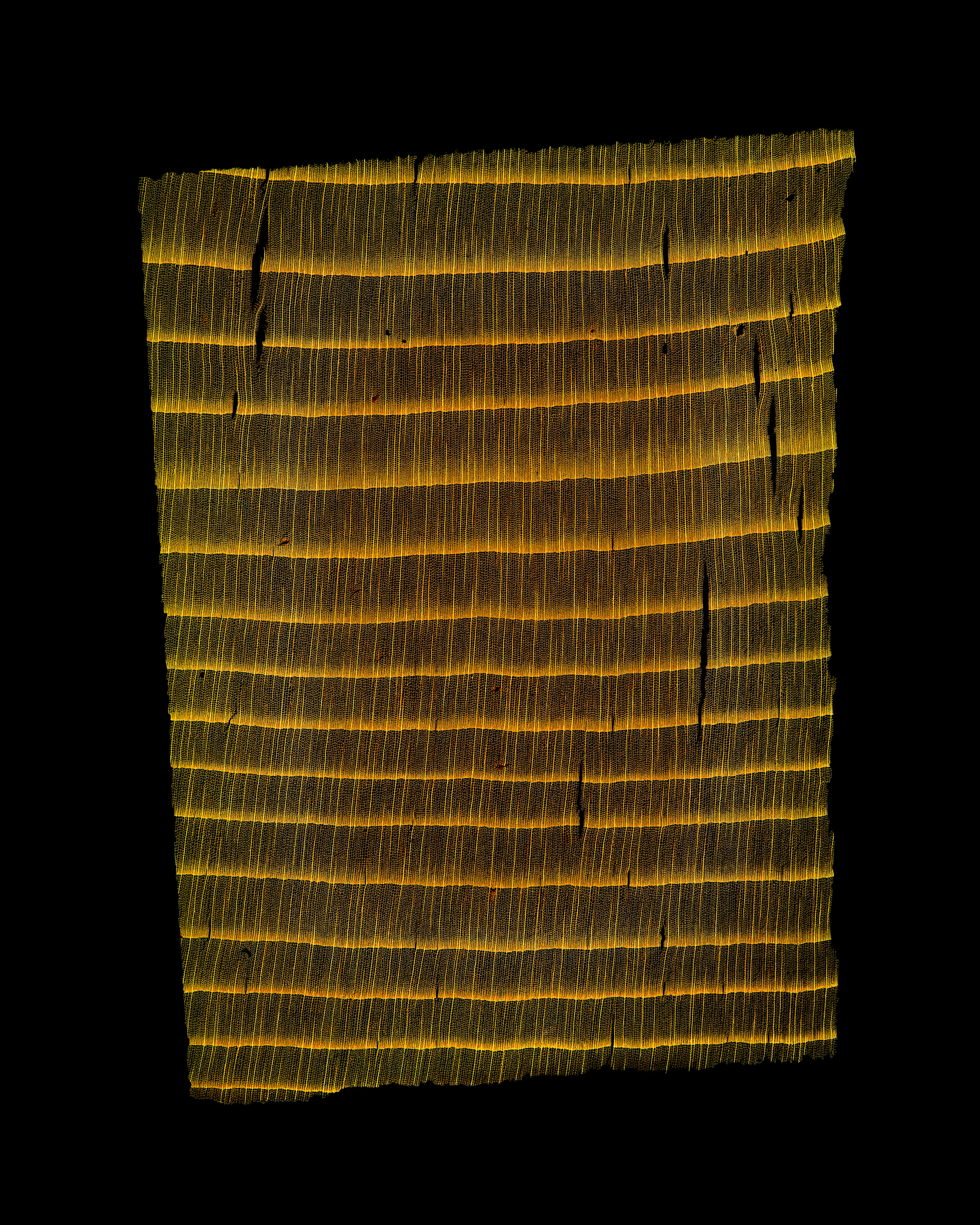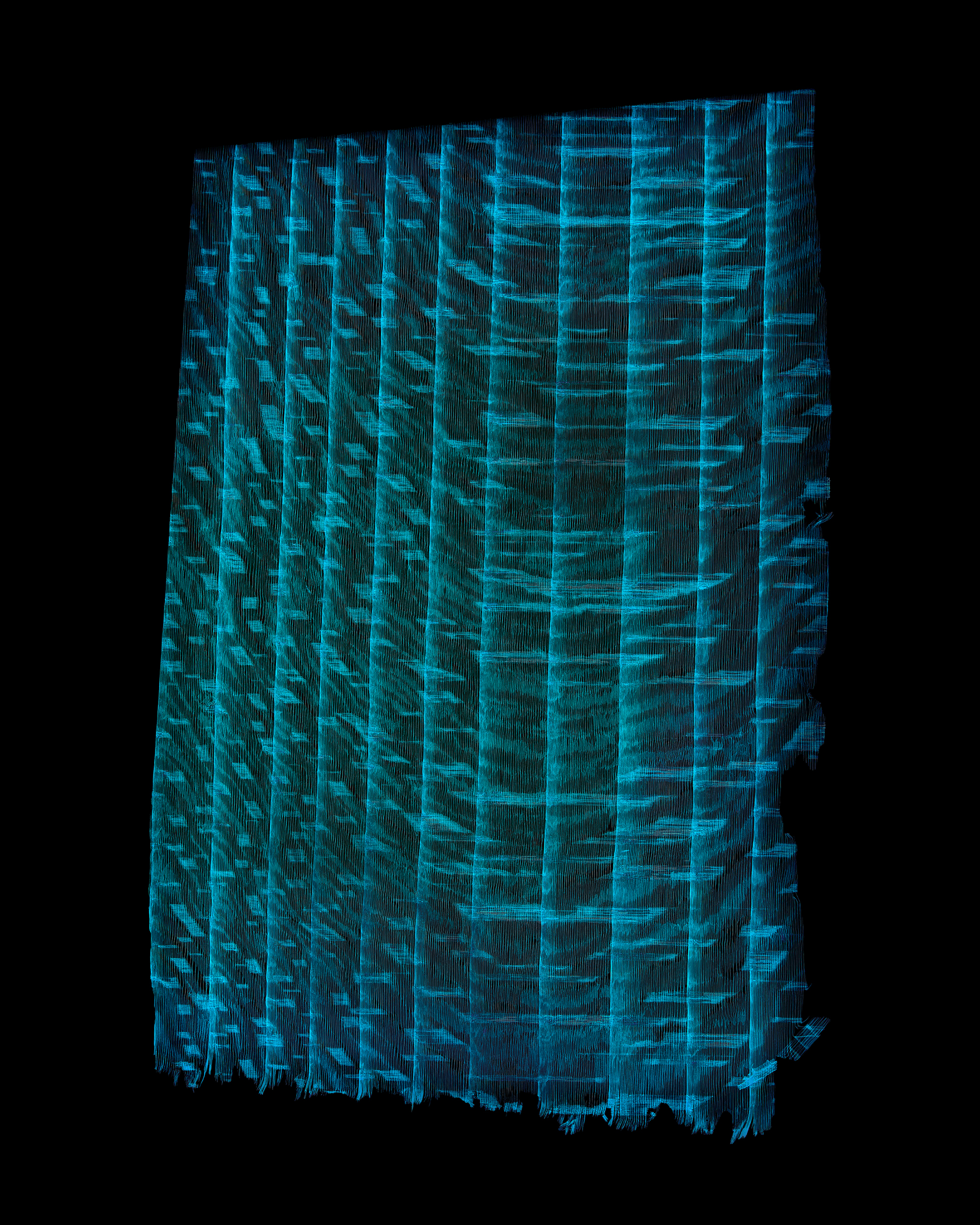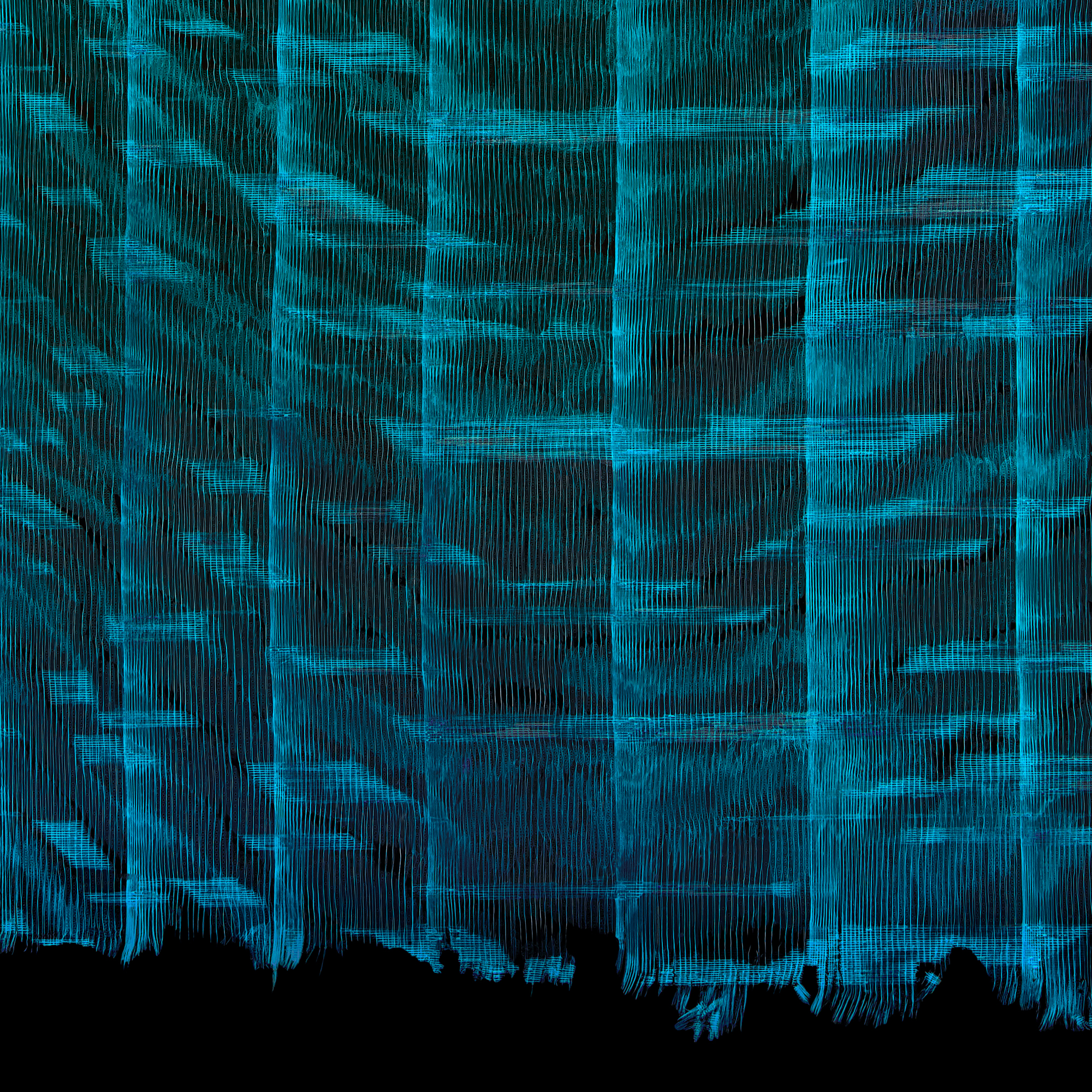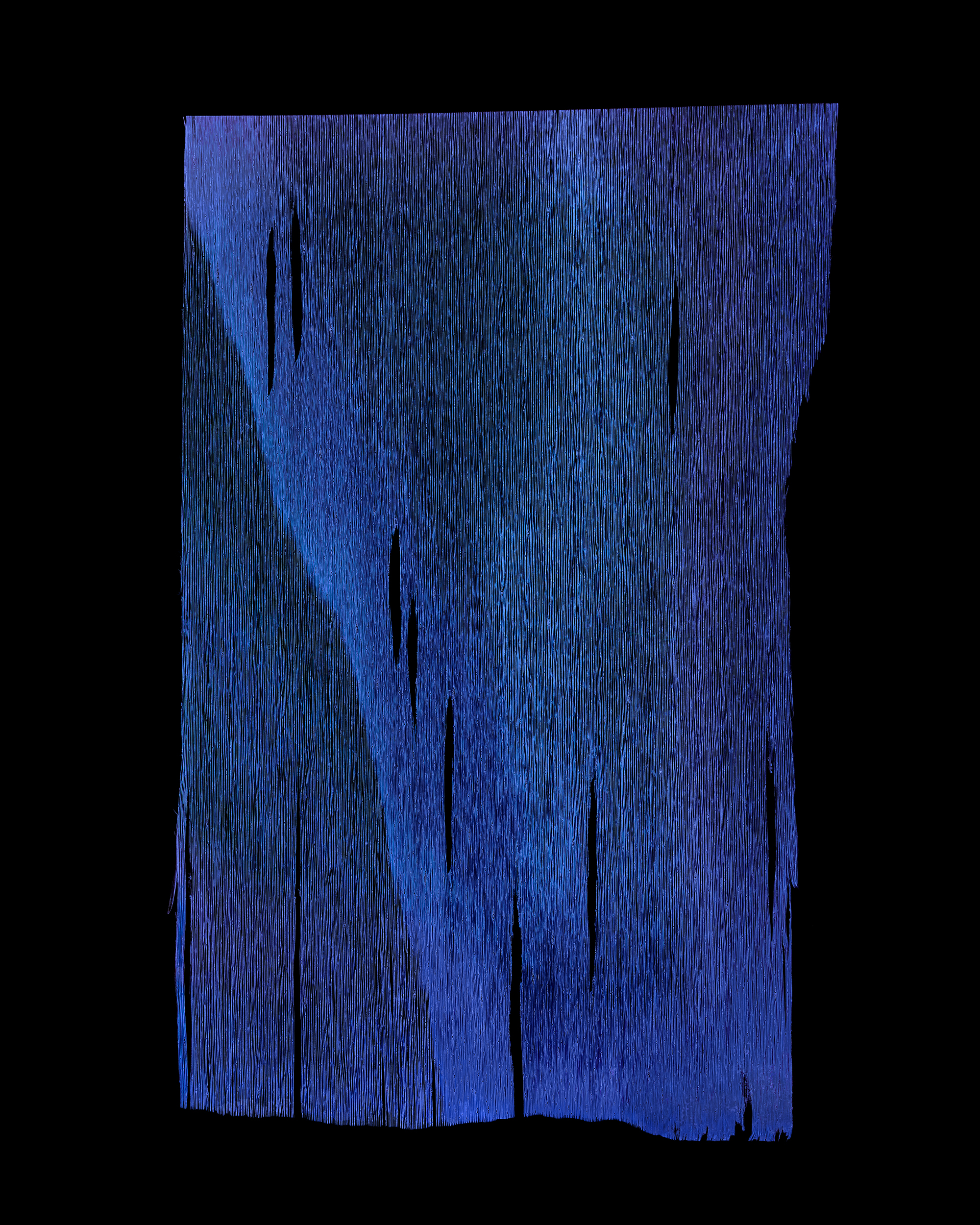Flesh of Flesh
2019-2023
![]()
Pinus Sylvestris (Scots Pine), 2019 and Pinus Radiata (Monterey Pine), 2021, installation view: Hypothesis: Everything is Leaf, Robert Capa Contemporary, Budapest, Hungary, 2022
The works concerning the internal, microscopic structure, the “flesh” of trees were inspired by the last work of Maurice Merleau-Ponty. Here Merleau-Ponty goes beyond his earlier concept, which rejected the transcendental ego and placed the body at the center of experience, and introduces the radical notion of “Flesh” (“la chair”). This collective flesh is simultaneously our own flesh and the flesh of the world. "Where are we to put the limit between the body and the world, since the world is flesh?" (MP, 1968, p. 138) From here on, the perception at the center of Merleau-Ponty’s postulation essentially involves the community between our body and the world – all perception is the direct result of the ancient connection with Being – as well as their fusion with each other. We can perceive things because we are also organic parts of the world: flesh of flesh. The world perceives itself through us. Merleau-Ponty first returns transcendence to the body, then gives back the body to the world’s Flesh-texture.
The deep ecological interpretation of the concept of Flesh raises the entwined nature of all forms of living, the mutual dependence, the vulnerability of the ecological system as a whole, and the interwoven character and awareness of all human, animal and vegetal modes of living. As an effect of Flesh replacing the concept of the “lived body”, nature is no longer an unresponsive, numb set or decoration separated from the human being and observed from afar.
![]()
Pinus Sylvestris (Scots Pine), 2019, archival pigment print on Hahnemühle Photo Rag Baryta paper, 127 x 102 cm (50 x 40 inches), 152.5 x 122 cm (60 x 48 inches)
Pinus Sylvestris (Scots Pine), 2019, detail
Abies Alba (European Silver Fir), 2019, archival pigment print on Hahnemühle Photo Rag Baryta paper, 127 x 102 cm (50 x 40 inches), 152.5 x 122 cm (60 x 48 inches)
![]()
Abies Alba (European Silver Fir), 2019, detail
Pinus Radiata (Monterey Pine), 2021, archival pigment print on Hahnemühle Photo Rag Baryta paper, 127 x 102 cm (50 x 40 inches), 152.5 x 122 cm (60 x 48 inches)
Pinus Radiata (Monterey Pine), 2021, detail
![]()
Larix, 2023, archival pigment print on Hahnemühle Photo Rag Baryta paper, 127 x 102 cm (50 x 40 inches), 152.5 x 122 cm (60 x 48 inches)
![]()
Larix, 2023, detail
Cariniana pyriformis (Colombian Mahogany), 2018, archival pigment print on Hahnemühle Photo Rag Baryta paper, 127 x 102 cm (50 x 40 inches), 152.5 x 122 cm (60 x 48 inches)
![]()
![]()
